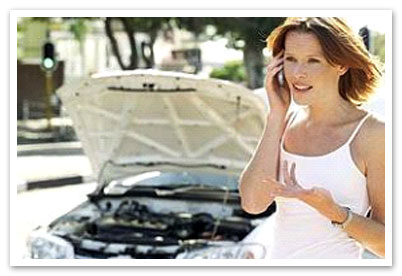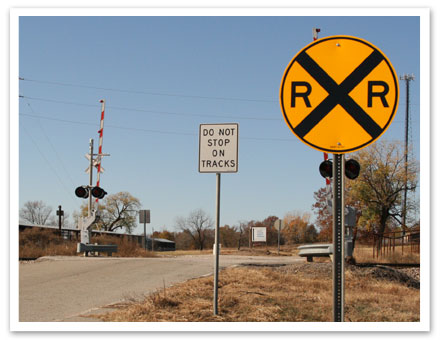What to Do When Your Engine Stalls

It’s every driver’s worst nightmare: you’re driving along when all of a sudden, your engine stops. But don’t panic. We’re here to guide you
through exactly what to do if you find yourself in this scenario.
What To Do If Your Engine Stalls While You’re Driving
While most engine failures are preventable through proper maintenance, there’s always a chance that your engine could malfunction no matter how well
you take care of your car. If your engine stalls in traffic, pull off to the shoulder of the road as soon as possible. Keep in mind that when your
engine stalls, you’ll lose power steering and then power braking, so you may have to move the wheel more forcefully while steering and press down
harder on the brake pedal. Shift to Neutral while you steer off the road.
Once you are safely off the road, try to restart the engine. If that doesn’t work and you must remain on the side of the road, make sure you are
visible to other roadway users. Set up flares or other warning devices behind your car at 100 and 200-foot increments. Put your hood up,
tie a white cloth to the radio antenna, and turn on your emergency lights as well as your taillights and the lights inside your vehicle
if it is dark out. You want to make yourself as visible as possible. Then, get back in your vehicle, and call for help. You should contact
someone to tow your vehicle to a garage and also phone a friend to pick you up.
What To Do If Your Engine Stalls While You’re Stopped
If your vehicle stalls when you’re already stopped on the road, you may need to push it off the road. You will need help to do this.
If you have passengers who are mature and healthy enough to help you push the vehicle, enlist their help. If not, you may need to rely on
the kindness of strangers.
In the worst case scenario, if you have no help, you may need to call the police and roadside assistance because it’s not possible to push a car
off the roadway by yourself.
To push a vehicle off the road, first make sure your emergency hazard lights are on and other drivers can see what you are doing. Do not stay on the
roadway in heavy traffic or if you can see other vehicles driving toward you.
If the road is clear and other drivers are giving you the chance to push your vehicle off the road, shift into Neutral. Position one or two strong
individuals behind the vehicle. Tell them to push once the car is in Neutral.
You can stand outside the driver’s side door with your right hand on the steering wheel and your left hand on the door. Push while steering the car
with your right hand. It will be slow going, but you can usually push a light vehicle off the road in this way.
DO NOT attempt to push a car off the roadway on a hill, as your car could roll down the hill. If your car is stalled on a hill and will not start,
activate the parking brake and call the police and roadside assistance.
Once your car is off the road, push it as far away from the road as possible. Position it in a safe way (i.e., do not obscure other drivers’ view of the
roadway or a turn) and leave the hood up. Call roadside assistance to tow your vehicle and a friend to come pick you up.
What To Do If Your Vehicle Stalls on the Tracks

You should NEVER stop on railroad tracks. If your car stalls on the tracks and you cannot restart it, get out and try to push it off the tracks.
Keep a close lookout for trains. If you can’t push your car off the tracks, go get help. If a train is approaching and your vehicle is stalled,
get out quickly and get clear of the tracks. Run in the direction from which the train is approaching to avoid flying debris, staying clear of the
tracks.
What Causes Your Engine to Stall?
Your engine could stall for any number of reasons, including the following:
- No gas. If your fuel tank is empty and you’ve been riding on “E” for awhile, this is the most likely culprit.
- Mixture of fuel and air isn’t rich enough. This can happen when it’s really cold out.
- Clutch issues. If your vehicle has a manual transmission, it may stall if you take your foot off the clutch while in gear without giving it gas.
- Bad fuel pump. You’ll need to take your car to a mechanic to have them replace the fuel pump if it's faulty.
- Bad alternator. Your alternator charges your car’s battery, so if it quits, so will your engine.
- Dead battery. This may be the culprit if you’re unable to start your car. You may be able to jumpstart your dead battery with the help of a working
vehicle.
- Dirty air filter. If your air filter gets too clogged or dirty, it won’t allow enough air flow to your engine, which could cause it to stall.
- Faulty coolant sensor. If your vehicle has a coolant sensor and the sensor isn’t working properly, it may falsely tell your vehicle it is overheating,
which will cause your vehicle to shut down to prevent any damage.
- Low fuel pressure. This might cause your car to stall on an incline.
Take a Course to Learn More
If you enjoyed this article and are interested in learning more about driving-related topics, you should check out our courses on www.safe2drive.com.
We offer courses in a variety of topics including Defensive Driving and Driver Education. In addition to teaching you how to be a safe driver, our courses
can help you dismiss a ticket, get your driver license, or even get an insurance discount. We also have courses specifically tailored to mature drivers (i.e., drivers
age 55 and older) for insurance discounts.